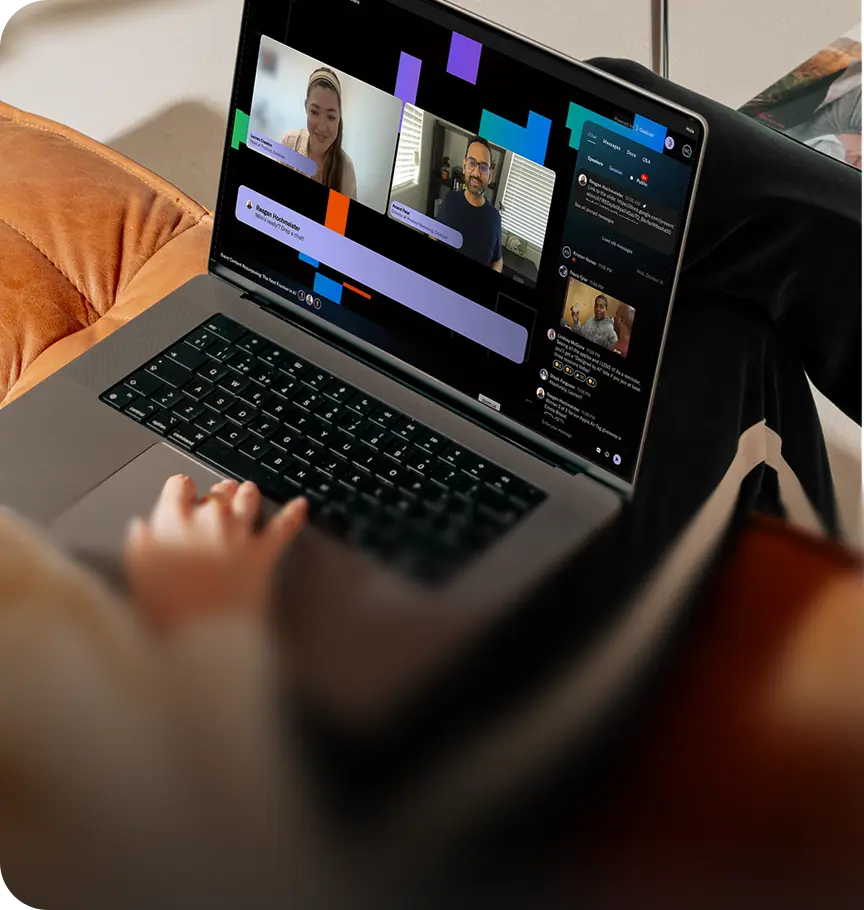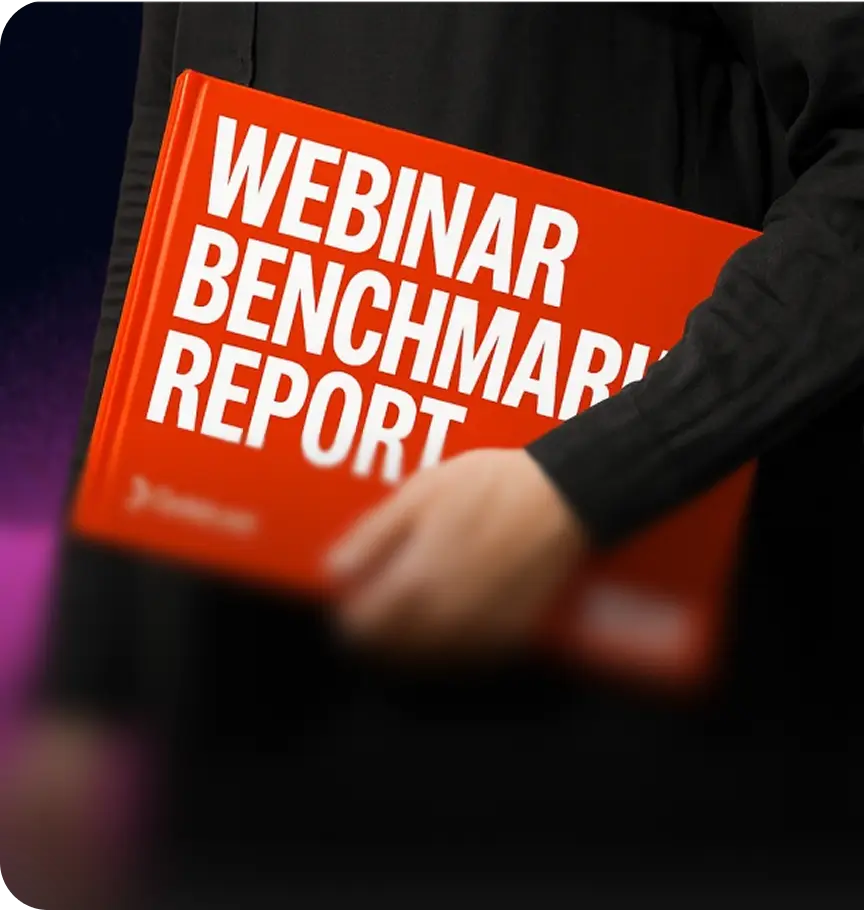LinkedIn Lessons, Part II: Use a Content Matrix to Unlock LinkedIn Post Ideas

Table of Contents
Maximize Your Marketing ROI
Join 10,000 other marketers already getting the best tips on running engaging events that boost pipeline and create raving fans.
In our first session with Mark Jung, Founder of Authority and LinkedIn expert, we learned about the most pervasive LinkedIn myths and how to create a great LinkedIn post (if you missed those takeaways, click here!).
Today, we'll be talking about how to use a content matrix to develop your brand mantra, pillars, and post ideas. We've even got a copy of the matrix for you that you can use to create your own!
Here are the key takeaways from the second LinkedIn masterclass:
- Consistency is key
- Use a content matrix to come up with LinkedIn post ideas
- 7 types of content to create from your matrix
- We get by with a little help from our friends (and the matrix)
If you want to watch the full replay—including a couple more live LinkedIn profile reviews—be our guest!
Consistency is key
A lot of people think that how often you post isn't that important. Maybe you should just wait till you're feeling inspired—that doesn't sound like a bad plan, right?
The truth is that being consistent is one of the hardest parts of being a LinkedIn creator—but it's necessary. People get lost in the how of creating, but what matters is that you simply show up every single day, even when you don't feel like it. (Kind of like work in general!)
Quick q: How many podcast episodes do you think it takes to become a top 1% global podcast?
The answer might surprise you. It only takes 21 episodes! It doesn't even matter what type of podcast you're running—continuing on for that long is rare. Most people stop the podcast after the first season, and the remaining creators say "nope" after the 20th episode.
This is a testament to the power of staying the course. There are millions of episodes out there, but almost all of them are already done. Finito. The end. No more episodes. By continuing on, you set yourself apart from 99% of creators.
So, how do you keep yourself going? Allow us to introduce you to a handy tool that Mark calls his "content matrix."
Use a content matrix to come up with LinkedIn post ideas
Your content matrix explains your why, your mantra, and your core pillars. It's easy to revisit it and come up with things to say when you're feeling less than enthused about posting.
PS: Snag your own content matrix here!
You can only be known for one thing
First: Don't go too wide with your content. We know that you know a lot—about a lot of things—but there's no need to flex all of your knowledge on LinkedIn.
You can only be known for one topic. Let that sink in! Just one topic. Think long and hard about what that one topic might be for you, and then develop your content matrix around it.
For Mark, that's LinkedIn B2B marketing. He stays hyperfocused on that topic, no matter what.
Recognize your enemy and write your mantras
We're all about making friends, but part of building your matrix is identifying your enemy.
It might seem natural to jump to seeing your competitor as the enemy, but the real enemy is probably something more distinct and vulnerable that you can call out in your content.
For Authority, the enemy is ghostwriting. Mark's POV is that anyone can do ghostwriting, but what people who want LinkedIn growth truly need is a ghost marketer who understands distribution and audience-building.
If you need help coming up with your enemy, start with the question: What's wrong with the market? What is my "why"? This "why" statement can help lead you to what you think is wrong with the market and thus highlight your enemy.
For example, when Mark started out in tech, he noticed that every B2B company was pretty similar. The messaging was very formal and business-like, and he didn't like it. He broke through the noise by using humor as his superpower, connecting to his audience in memorable ways while still getting his message across.
In this scenario, the enemy was the stale, "this is how it's always been done" thinking about social. Mark's mantra—which he still holds—was that B2B marketing should never be boring. You can be professional without being yawn-inducing!
Supporting pillars
Once you're clear on your enemy and your mantras, you can start to think about the pillars that uphold your brand.
One of Mark's pillars is that companies need to invest in their "brand moat." Because 97% of B2B buyers aren't actually buyers yet, companies need separate budgets. Brands should be building out the company brand, as well as personal and media brands, so they can speak to all the people who are still getting to know you.
From this pillar, Mark can post about anything that relates to it. He can talk about why people buy from people they know, like, and trust. He can post about how to get the right types of attention and connect to people.
Another pillar relates to LinkedIn data-driven content advice—what Mark has learned from getting a million impressions a week, plus the collective lessons he's seen from driving more than a billion impressions on LinkedIn from media brands, client brands, and personal brands (nbd!).
When he posts related to this pillar, he's geared more toward actionable advice. He's showing people helpful stats and telling them exactly what to execute on.
You can see that pillars help you ladder up to the mantras that are driving your entire business forward, and they also help you build out a bunch of individual topics you can use for your posts.
7 types of content to create from your matrix
Now that you've got your pillars in place, it's time to think about posts. You can create tons of content once your matrix is done, and it will all relate to your core mantras!
Here are seven types of content you can create for each pillar:
- Actionable: Teach your audience something they can put into practice. Thinking back to Mark's pillar about companies investing in their brand moats, this might be a post offering a budget breakdown for company, personal, and media brands.
- Inspirational: Motivate your audience. Come up with a unique story from your life that will resonate with your readers, while also relating to your mantra or your brand beliefs. Remember that for all the talk about AI, one thing it can never do is draw from its lived, human experience to tell a compelling story. But you can!
- Contrarian: Is there something in the market that you disagree with? Is there something people do that you will never understand? Find your challenger POV and create a post!
- Personality-based: This can be a blend of educational and entertaining (edutainment, if you will), but people like to laugh. Marketing is stressful! Share memes, make jokes, and create content that allows folks to exhale and have a moment of levity.
- Comparison: Talk about the way things used to be done vs the way they are now. Make comparisons, and offer contrast between things. (For example: People used to follow companies, but now they follow the people within those companies.)
- Prediction: Share your perspective about what's going to happen based on data you saw, a convo you had recently, a report you just read, etc. Whether you're right or wrong, give your opinions and explain the "how" behind your thought process.
- Curation: Even if you don't have a lot to say early on, you can probably curate content that will help others. If you have questions, go into communities and ask those questions! Then aggregate the answers and share them with your network to help them get ahead.
With each category, you can apply it to a pillar. For example, Mark can take the "contrarian" post and apply it to his data-driven content pillar by finding a stat about something that's commonly done and pointing out why he disagrees with it. He'll talk about his thought process and any other info he feels backs up that POV, and then people are welcome to chime in with their thoughts.
What can Wolverine teach us about hooks?
Check out the post Mark created after our first session as an example of content that incorporates these principles and has a strong hook.
If you missed the live replay, Mark pulled a demand-gen marketer named Logan on stage to go through his LinkedIn profile. After the session, Mark posted this:
This post speaks to one of Mark's core beliefs about marketing: that good marketing requires contrast. The post features an interesting image, and it pulls in storytelling by sharing what happened at the LinkedIn masterclass between Mark and Logan. And it's funny!
The first hook here, "This Marvel 🤝 Heinz collab is genius," sparks some curiosity. Why is the collab genius? What is Mark talking about?
Then you read to the second hook, "Your best marketing has contrast. Why?"
Again, another curiosity-inducer that makes you want to click to keep reading.
Treat your hooks like a movie trailer. If someone only read the hook, they should still understand at least 80% of what you're talking about. If that's not happening, the hook isn't specific enough.
Don't give it all away, but give away enough to create excitement and interest!
Don't be afraid to repeat your hooks, either. If you came up with a great recipe that everyone loved, you wouldn't be scared to make it again—you'd want to. Same goes with your hooks! Repetition isn't a bad thing; it's a cheat code for great performance.
You can change your hook up; put it in quotes, put it on a billboard, try different images. But you should always be looking for a way to bring in your high performers and reinforce that message, as well as your brand pillars.
We get by with a little help from our friends (and the matrix)
One final tip as you're creating your own matrix: Don't be afraid to ask for help. Bring your friends in and the people who know you best, and ask them what the first thing they think about is, when they think about you. This can help you point you to the one thing you want to be known for, or at least give you a starting point.
There was so much in this session we couldn't get to here—we're talking two more LinkedIn profile reviews, including a company page!—and we hope you'll check out the full talk below.
Transform Your Video Marketing with AI
Stay In Touch
Platform
Resources
© 2025 Copyright Goldcast, Inc. All rights reserved.





 Upcoming Events
Upcoming Events Event Series
Event Series On-Demand Events
On-Demand Events

